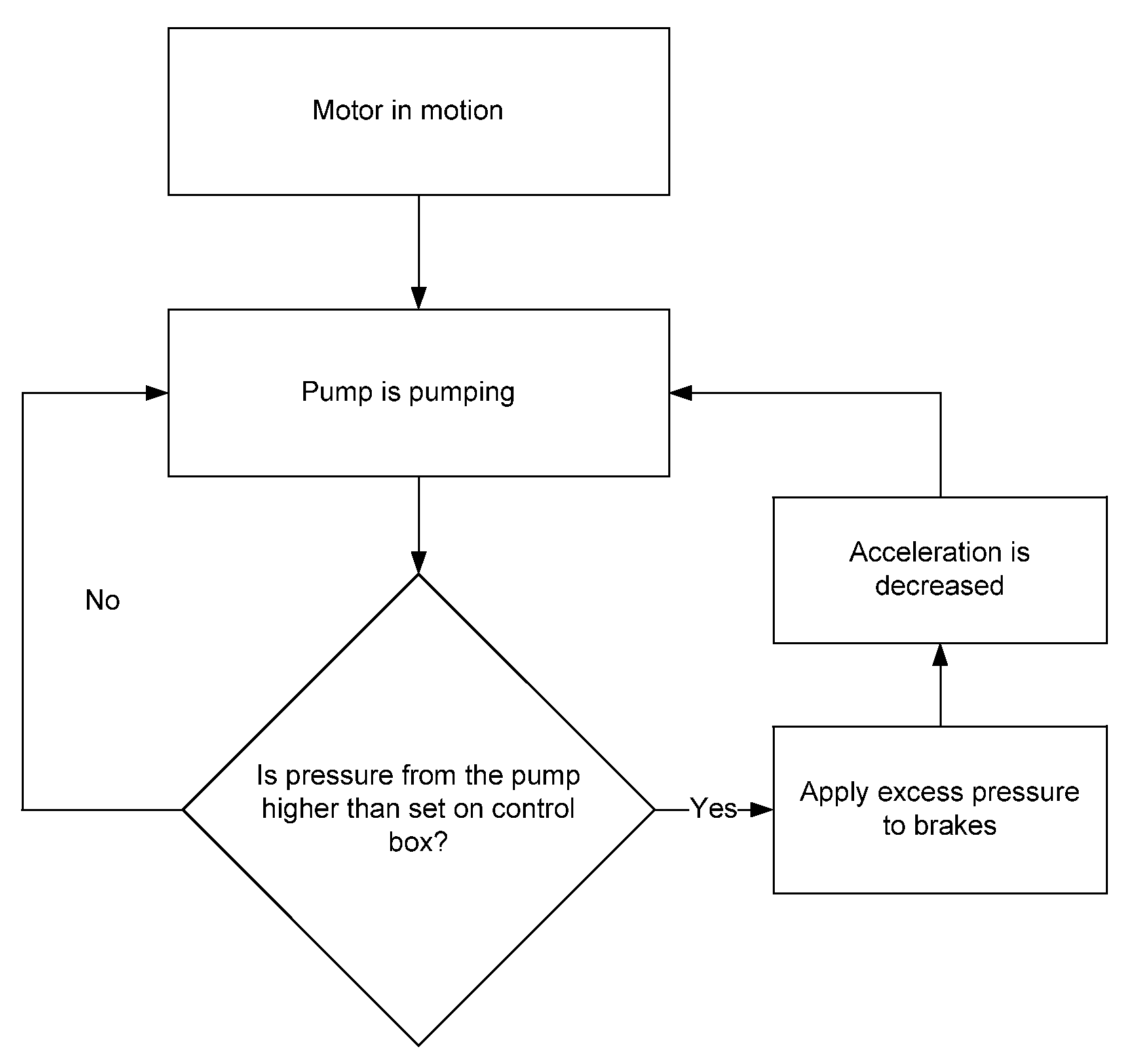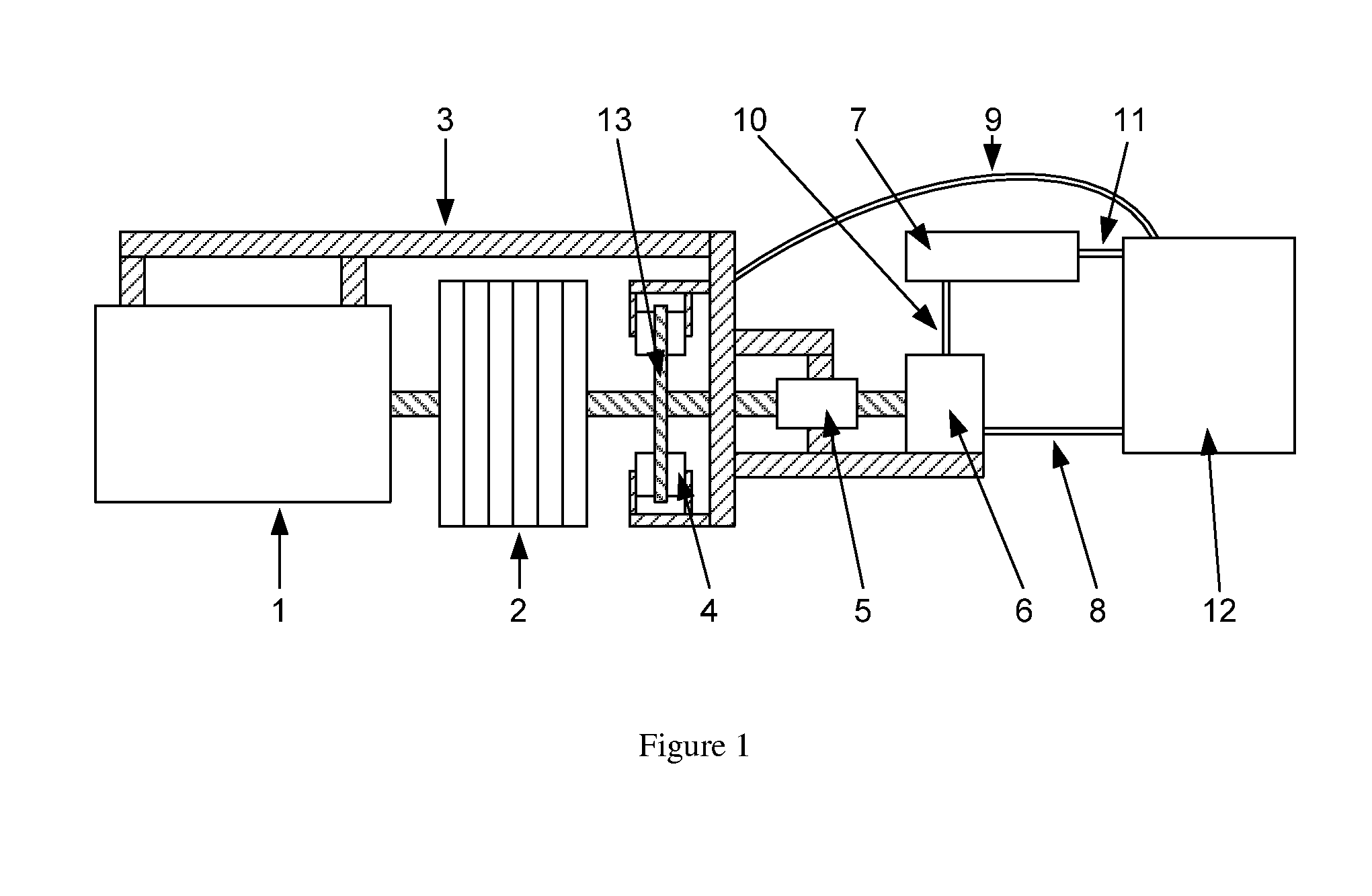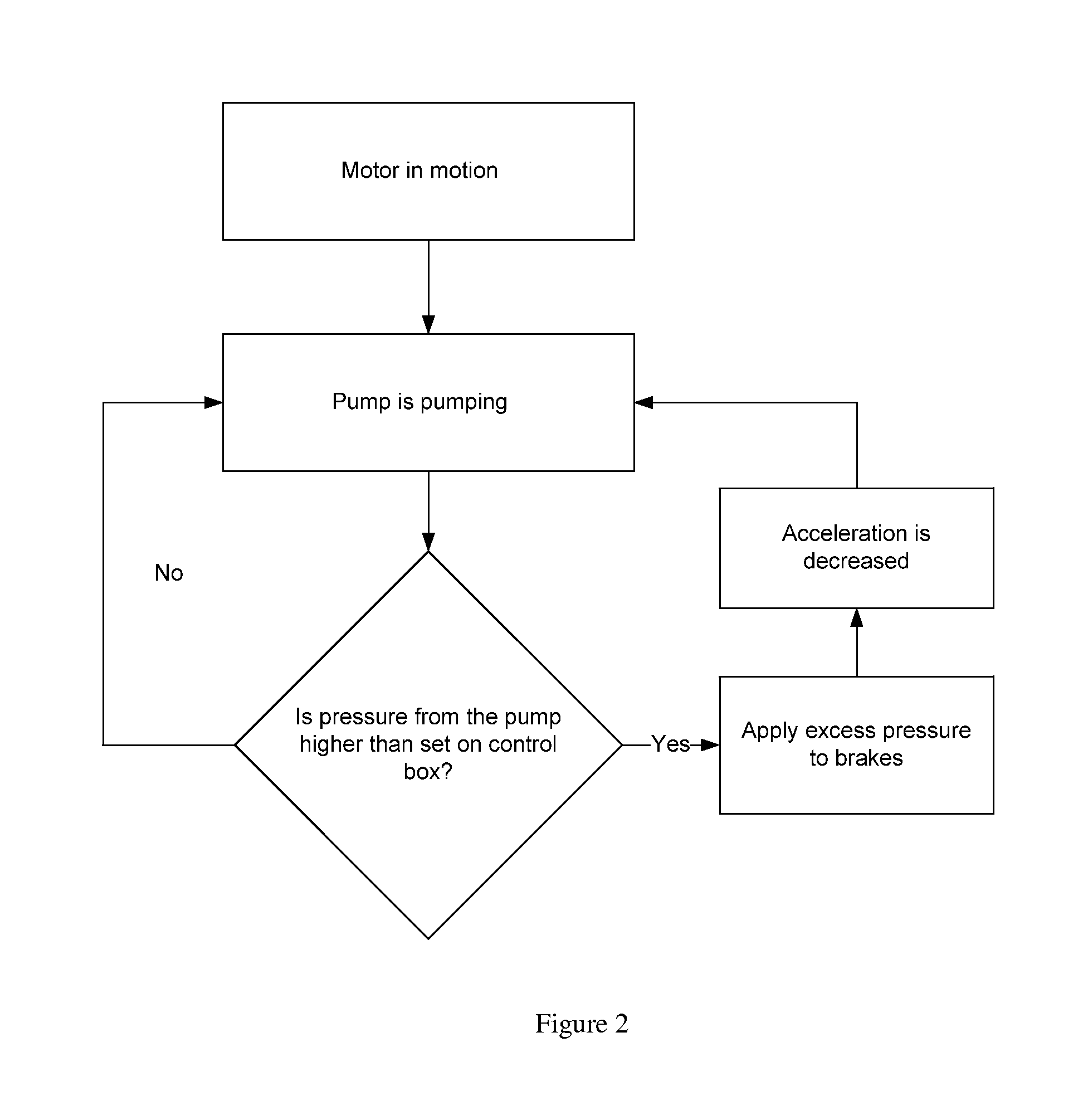Hydraulic Elevator Stabilization Device
a technology of elevator stabilization and hydraulic pump, which is applied in the direction of elevators, transportation and packaging, etc., can solve the problems of low oil pressure from the pump and slow rotation, and achieve the effects of convenient testing and service, convenient operation, and convenient us
- Summary
- Abstract
- Description
- Claims
- Application Information
AI Technical Summary
Benefits of technology
Problems solved by technology
Method used
Image
Examples
Embodiment Construction
[0015]Unit 1 is the motor, optionally including a transmission that powers the cable spool.
Unit 2 is the cable spool.
Unit 3 is the supporting frame that anchors the brakes and pump.
Unit 4 is the brakes that engage on the rotor.
Unit 5 is the transmission that changes the rotation speed to accommodate the pump.
Unit 6 is the pump that feeds high pressure oil depending on the rotating speed of the cable spool.
Unit 7 is the high-pressure oil storage tank.
Unit 8 is a high-pressure pipe that feeds oil to the control box.
Unit 9 is a high-pressure hose that feeds pressure to the bakes.
Unit 10 is a high pressure pipe that feeds oil to the pump.
Unit 11 is a high pressure oil pipe that feeds oil to the tank.
Unit 12 is the control box that monitors the incoming pressure from the pump.
Unit 13 is the rotor that rotates with the cable spool.
OPERATION OF INVENTION
[0016]There is no need for cables, electricity or computer to operate the device. At the end of the traction sheave, a rotor-based braking...
PUM
 Login to View More
Login to View More Abstract
Description
Claims
Application Information
 Login to View More
Login to View More - R&D
- Intellectual Property
- Life Sciences
- Materials
- Tech Scout
- Unparalleled Data Quality
- Higher Quality Content
- 60% Fewer Hallucinations
Browse by: Latest US Patents, China's latest patents, Technical Efficacy Thesaurus, Application Domain, Technology Topic, Popular Technical Reports.
© 2025 PatSnap. All rights reserved.Legal|Privacy policy|Modern Slavery Act Transparency Statement|Sitemap|About US| Contact US: help@patsnap.com



